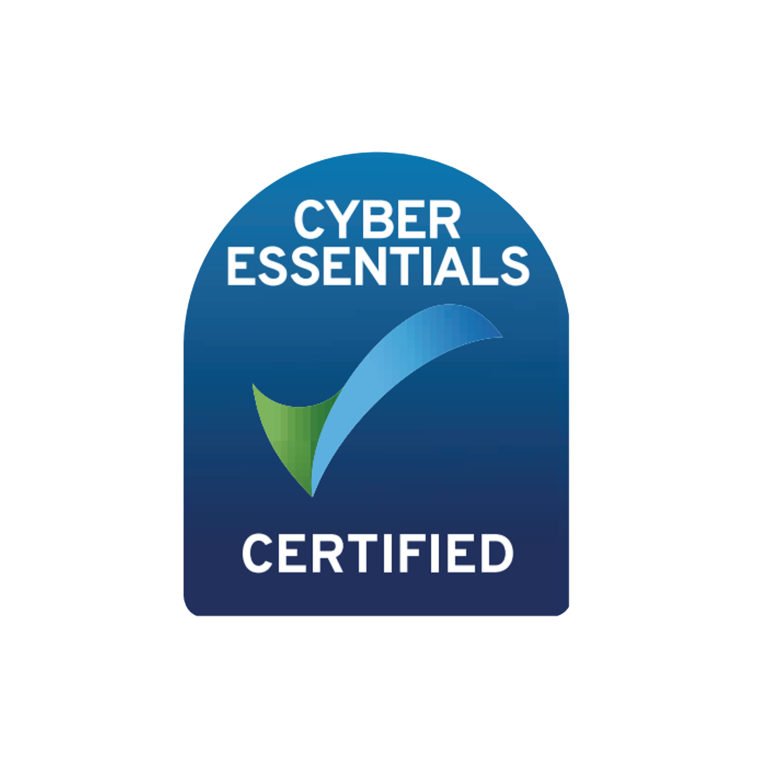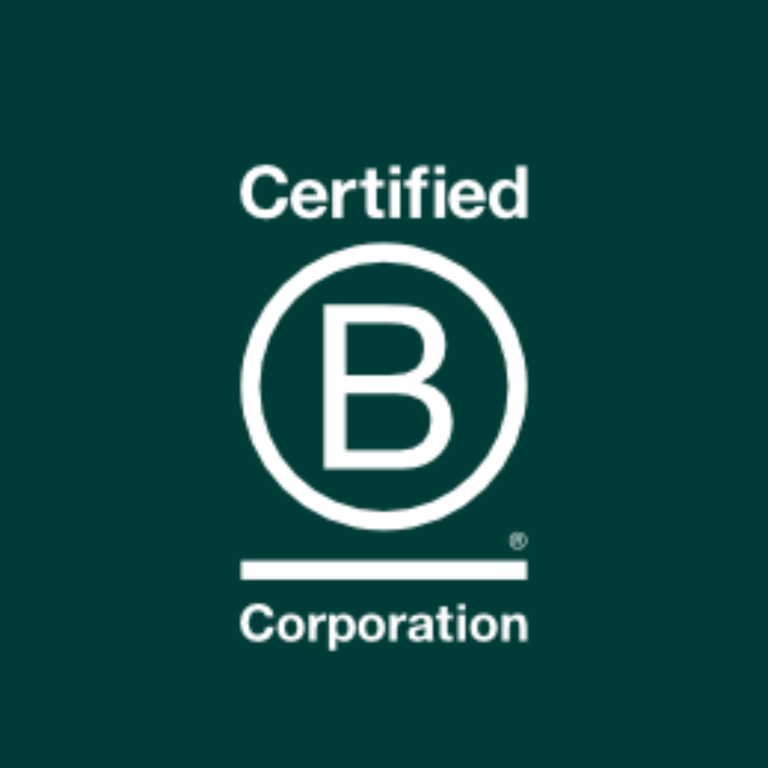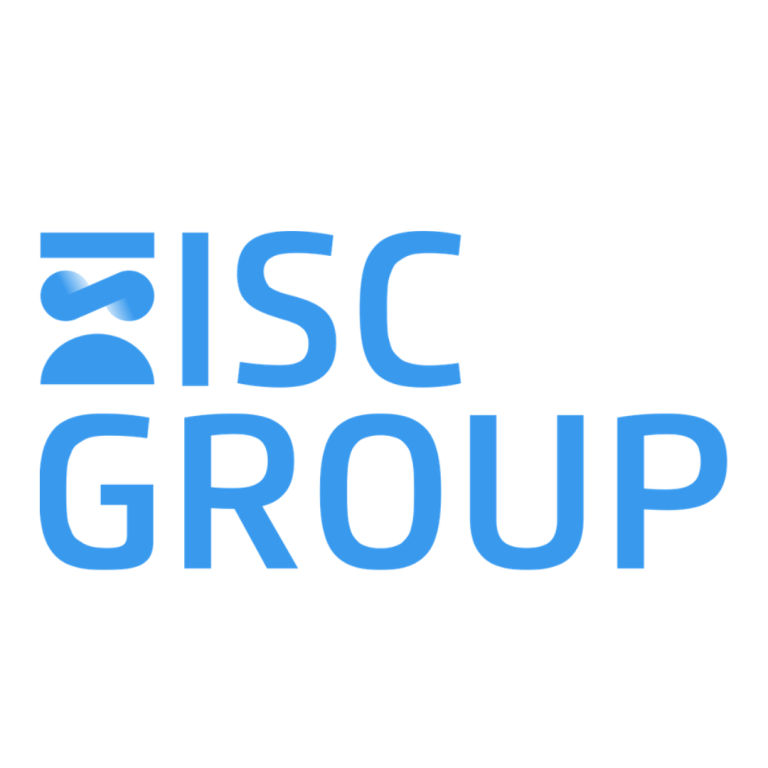Diversity, Equality and Inclusion: Be Part of the ‘Work in Progress’ as an Active Ally
Filippo is an expert in Fintech venturing, acceleration, advisory and has worked with established and new firms in Insurance and Finance internationally, including Innovation & Scouting Lead for Ergo, MunichRe Group. He is currently Global Head of Ecosystem Development for specialist venturing commercialisation firm Alchemy Crew. Here, Filippo gives a personal view on one of the key aspects of the ‘S’ in ESG: embedding DEI in our workplaces, including his practical tips for us all to be part of the solution, and grow into an active Ally.
Diversity, Equality and Inclusion (DEI) in the workplace have never been more important. All companies, from start-ups to scale-ups and public listed companies are now establishing policies and initiatives around DE&I. The media attention and scrutiny are at an all-time high with daily coverage about the topic.
You could argue that “things” are changing (for the good): however, this is far from reality. Inequality – especially in the workplace – persists and still, a lot more needs to be done. I’ve spent my career (so far!) on venture building, ecosystem development and innovation scouting with global players and supporting FinTechs to grow and scale successfully. Whether it’s established firms or FinTechs, my experience is that we still live in a world built, managed and dominated by white, straight males. No wonder the DEI issue makes a lot of people uncomfortable, especially at Board level.
(Big) Tech: Leading on DEI?
Take Google as an example, one of the most innovative companies in the world, didn’t change its attitude towards DEI from 2020 to 2021. As the data extracts from the 2021 Report illustrate, the black or African percentage of the total workforce was 1.6% in 2020 and 1.8% in 2021… An increase of 0.2%…
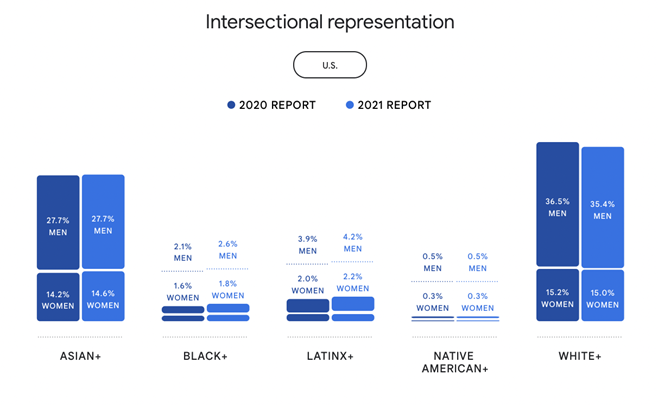
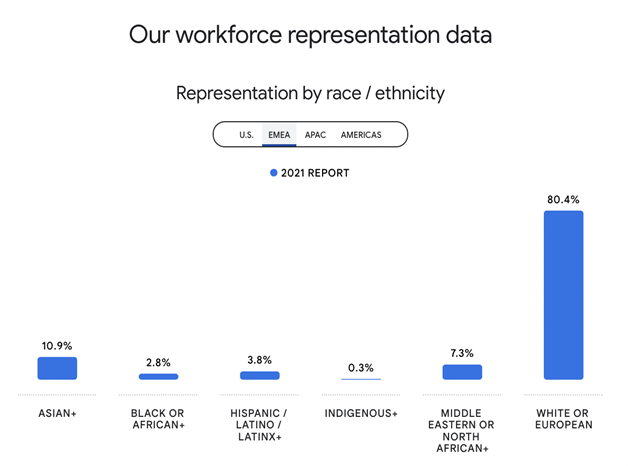
Although Google claims they “are taking actions”, most remains to be done. Take a look for yourself at the Google diversity report https://diversity.google/annual-report/
In a society where new technologies are more likely to be created and trained (i.e. AI and algorithms) in a context of lack of diversity, bias and prejudice are likely to be ingrained within its fundamental structure, and therefore more difficult to eradicate. From infrared soap dispensers that are unable to detect darker skin, to digital cameras that ask the question “did someone blink?” to smiling Asian faces, to facial recognition algorithms that work better with middle-aged white men’s faces than People of colour, women, children and the elderly, Tech is continually being used to design and deploy tools that perpetrate different kinds of bias.
In a study led by MIT, the researchers show that
- technological progress may feature too little diversity
- the research process ( of technologies, R&D etc) may, under certain circumstances, generate too much conformity and too little diversity in results.
Guess why? Because those who lead R&D labs and build new technologies are not diverse enough (you guessed it, the majority are white and male).
Why DEI and the Business Case: A Reminder
Diversity & Inclusion bring a positive financial impact to companies. There is plenty of research, showing that companies with a higher diversity workforce are more likely to financially outperform those with a lower diversity workforce. And inclusive companies are 1.7x more likely to be innovation leaders in their market.
“We found that the greater the representation, the higher the likelihood of outperformance. Companies with more than 30 per cent women executives were more likely to outperform companies where this percentage ranged from 10 to 30, and in turn, these companies were more likely to outperform those with even fewer women executives or none at all” McKinsey, 2020
A team that is pretty much homogenous will produce homogenous outcomes. These can create weaknesses within your organisation, especially around the ability to understand your risks, threats, and opportunities. Diverse teams, on the other hand, built around different perspectives, experiences, and sets of skills, enable creativity, innovation resilience and foster higher degrees of engagement and productivity and consequently increase in revenue. And that leads to the ability of a company to be better equipped for a diverse world, always in constant change.
DEI it’s not just a good business practice. Lack of representation and unchecked bias can perpetuate toxic narratives. Discrimination, inequality, and exclusion have harmed society for long enough. If you want to live in a progressive, inclusive, dynamic and innovative society, you will need to be part of the change and make a positive contribution to society.
So, what more could Insurance do about DEI?
- Educate yourself and become an active ally
An active Ally is any person that actively promotes and aspires to advance the culture of inclusion through intentional, positive and conscious efforts that benefit people as a whole.
- Don’t assume to understand and be familiar with the DEI topic: statistically, you are more likely to be part of the problem, rather than experiencing it!
- There are plenty of resources to educate yourself;
-
- Podcasts: here are some of my favourites
- https://elementofinclusion.com/podcasts
- https://divercitypodcast.com/
- https://theewgroup.com/podcasts/
- https://jenniferbrownspeaks.com/podcast/
-
- Readings: again, picking out some highlights
- How to Be an Inclusive Leader: Your Role in Creating Cultures of Belonging Where Everyone Can Thrive, Book by Jennifer Brown
- The Culture Map: Breaking Through the Invisible Boundaries of Global Business, Book by Erin Meyer
- Blindspot: Hidden Biases of Good People, Book by Anthony Greenwald and Mahzarin Banaji
- Inclusion: Diversity, The New Workplace & The Will To Change Book by Jennifer Brown
-
- Youtube:check these out
- Kimberlé Crenshaw Ted talks: https://www.youtube.com/watch?v=akOe5-UsQ2o&ab_channel=TED
- Janet Stovall on Ted talks: https://www.youtube.com/watch?v=kvdHqS3ryw0&ab_channel=TED
- Bloomberg Quicktale https://www.youtube.com/watch?v=yufBaEfmwOI&ab_channel=BloombergQuicktake
And working on your own knowledge:
- Learn DEI terminology. Terminology such as “Intersectionality” “ queer” “ “non-binary” etc.
- Here is a glossary example by Harvard. You will learn how to refer to every single group with a different name.
- Learn your unconscious stereotypes and biases: Take this Harvard test here
And remember: just because you are educating yourself and you might be aware of the issue, it doesn’t mean you are helping solve them. An increase in diversity awareness doesn’t guarantee inclusion.
- Engage
Now that you know more about DEI, it’s time to engage and listen!
- Survey: Ask your stakeholders for their views on the topic. Understand their views, their issues and experiences. You can do this with a survey or with ongoing events where you will invite your stakeholders to discuss the topic.
Only by doing so, can you start a conversation about these topics and consequently find the right solutions and approach to them.
- Follow DEI influencers and thought leadership on LinkedIn: you might learn something new every day.
- Invite inspirational speakers to talk about DEI: this could help your stakeholder or customers to immerse themselves in the topic and learn from real experiences.
- Get involved with your local communities. Try to connect with them, know their stories and understand the issues they are facing. Some of the issues might be visible but others aren’t. Could your organisation do something about it? The members of these communities might be your customers. Helping them could impact positively your organisation.
- The DEI conversation should be mainstream and not a one-off conversation at the margins of your organisation If you want to achieve sustainable long term growth.
- Empower
Engagement with your stakeholders is the key to success. However, you will need to empower them in order to achieve an inclusive and equal workplace. They will need to become advocates for DEI.
- Budget: In order to promote a truly DEI workplace, you will need to implement DEI initiatives and allocate budget and resources
- Transparency: make the hiring and promotion process more transparent.
- Embed DEI in your work practice. Including people with disabilities, People of colour and members of the LGBTQIA+ community can give teams an insight they would not have come to on their own.
Some final thoughts?
DEI is not just about quotas or having 50% of males, 50% of women, and an equal percentage of all races, religions, disabilities, sexualities amongst your workforce. Many organizations have policies that specify quotas to promote diversity, a strategy that rarely works: you’re fixing a number, not changing the culture. You will need to talk and understand whom you are trying to serve. Ask yourself:
- Does my team reflect the communities we want to protect?
- Are we collaborating with people from those communities?
- Do our products, services, marketing campaigns and overall our company narratives reflect the diversity of traditionally underrepresented groups?
If the culture of a workplace doesn’t genuinely embrace the diversity of thought, quotas don’t matter. So your job – in established firms, in Fintechs, wherever – is to build an inclusive and diverse culture where everyone holds a seat at the ‘decisions table’.


